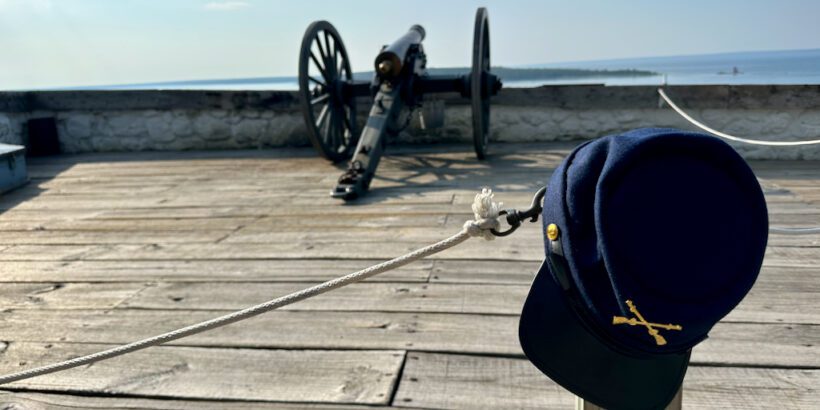Mackinac Island in Michigan is a treasure trove of captivating history.
From its distinction as one of the earliest national parks in the United States to its transformation into a sought-after destination for travelers, it is steeped in historical significance.
Yet, one of the most intriguing and compelling narratives on the island unfolds within the walls of Fort Mackinac.
Table of Contents
What is Fort Mackinac?
Fort Mackinac, situated on Mackinac Island in Michigan, is a historic military fort offering visitors a glimpse into the military history of the region and the role the fort played during the late 18th and early 19th centuries, including its involvement in the War of 1812.
Fort Mackinac: a brief history
Fort Mackinac has roots dating back to the late 1700s.
Before 1763, the French utilized Fort Michilimackinac, located on the mainland’s south shore of the Straits of Mackinac, to assert control over the region.
Following the Treaty of Paris in 1763, the British took control of the French fort but found it challenging to defend.
In response to these challenges, in 1780 Lieutenant Governor Patrick Sinclair took charge of the construction of a new fort made of limestone on the 150-foot limestone bluffs of Mackinac Island.
To create this new fort, various buildings were relocated from the mainland post of Michilimackinac, including the barracks, guardhouse, and provision storehouse.
The fort was strategically positioned to oversee the Straits of Mackinac, connecting Lake Michigan and Lake Huron, and played a pivotal role in regulating the lucrative fur trade. But it had its shortcomings as you’ll see.
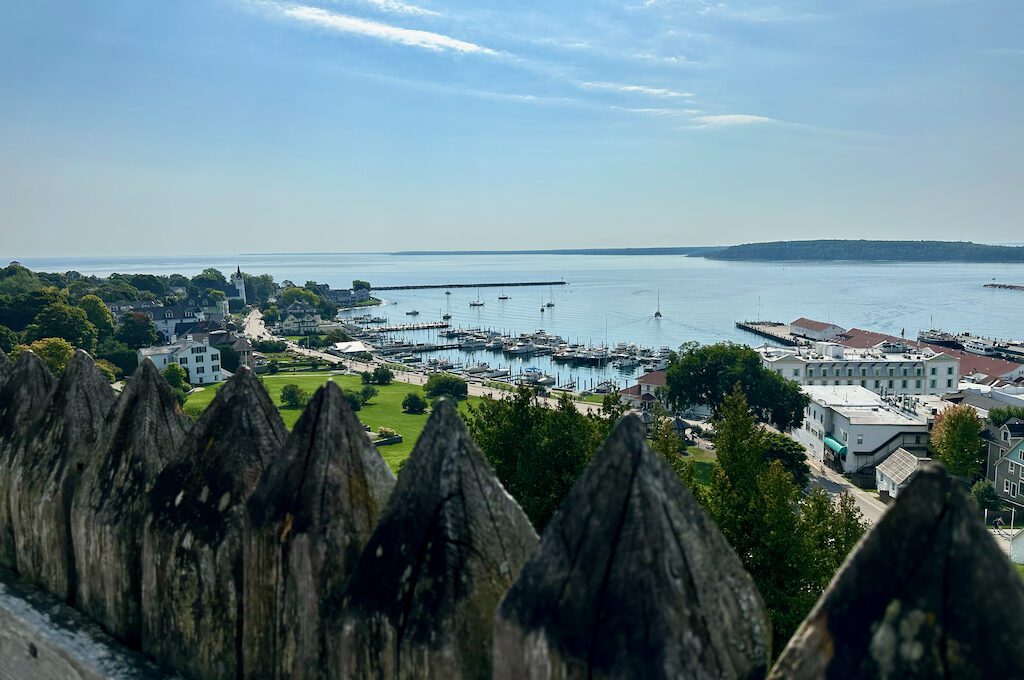
Eventually, in 1796, several years after the American victory in the Revolutionary War, the United States assumed control of the fort and it went on to play a substantial role in the region’s history, notably during the War of 1812.
In June 1812, as the War of 1812 commenced, Fort Mackinac was defended by a modest United States garrison consisting of roughly sixty men, led by Lieutenant Porter Hanks.
Unfortunately, Hanks and his men were unaware of the outbreak of the war due to a lack of communication.
In the early hours of July 17, 1812, a joint British and Native American expedition, led by British Captain Charles Roberts, launched a surprise assault on Fort Mackinac.
This force comprised 40 British soldiers along with 500 French Canadian and Native American allies, significantly outnumbering the US troops.
They disembarked on the northern tip of Mackinac Island, a location still accessible today and recognized as “British Landing.”
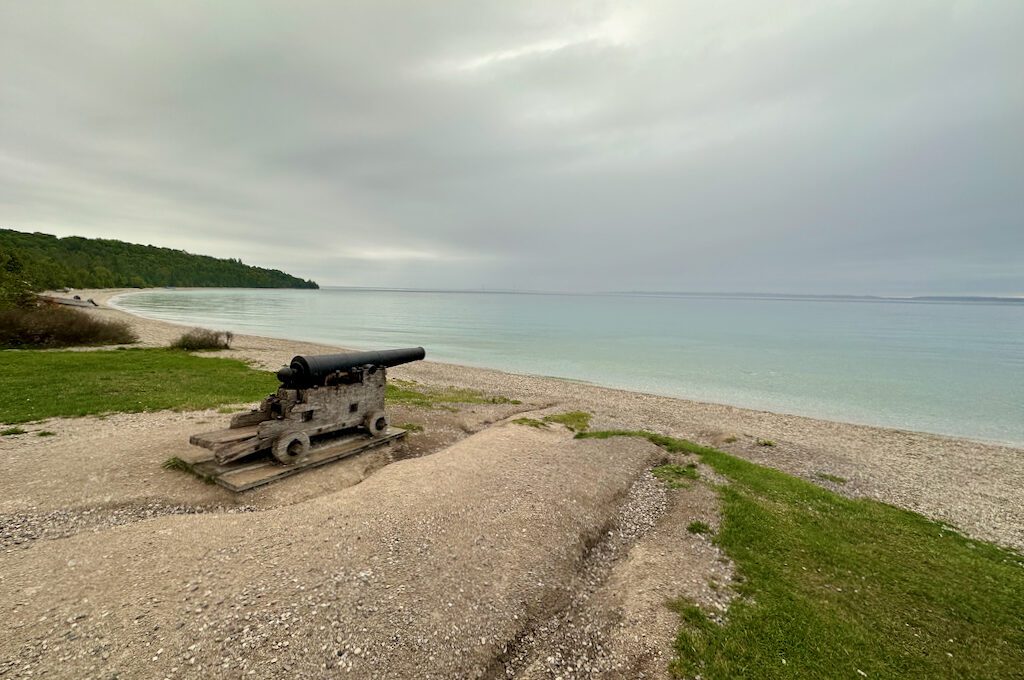
They then ascended to the island’s highest point, which afforded a commanding view of Fort Mackinac.
This area was eventually reclaimed by the United States and named Fort Holmes. And today, there is a recreated fort at this location that offers a fascinating historical experience well worth exploring.
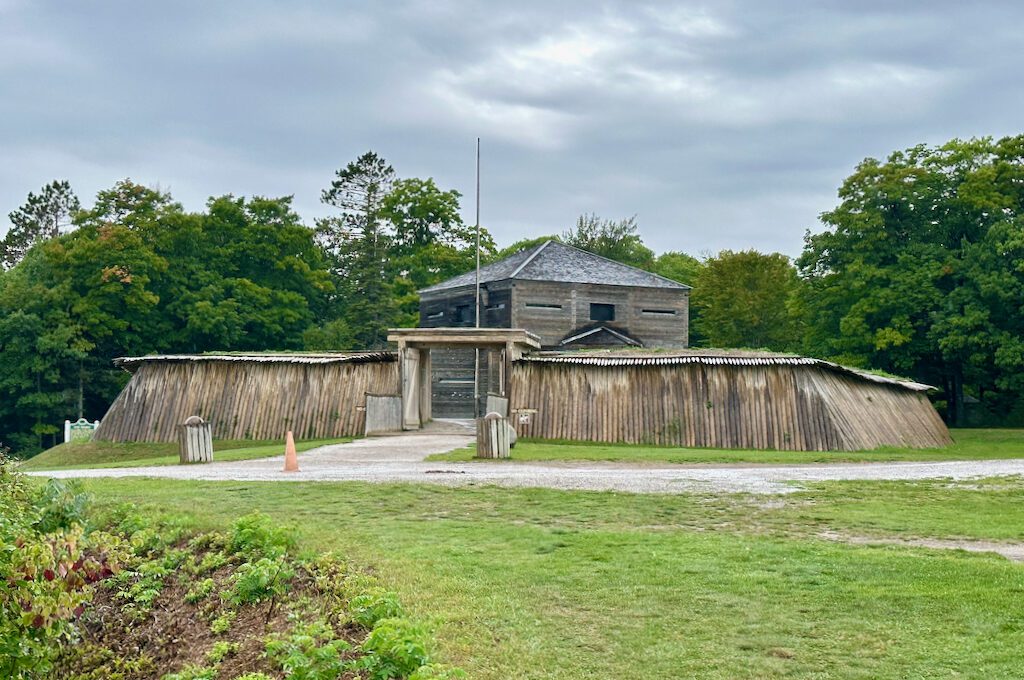
But back to the invasion by the British….
Once the British were on the island’s high point they strategically positioned their cannons directly aimed at the fort, compelling its surrender in what marked the first land engagement of the War of 1812.
A couple of years later in August of 1814, there was another significant battle for the island that ended unfavorably for the Americans. Similar to the British approach, the American forces landed on the island’s northern side.
However, as they advanced toward the fort, they faced strong resistance and were ambushed by Native American allies, leading to the loss of 13 American soldiers, including their second-in-command, Major Andrew Holmes.
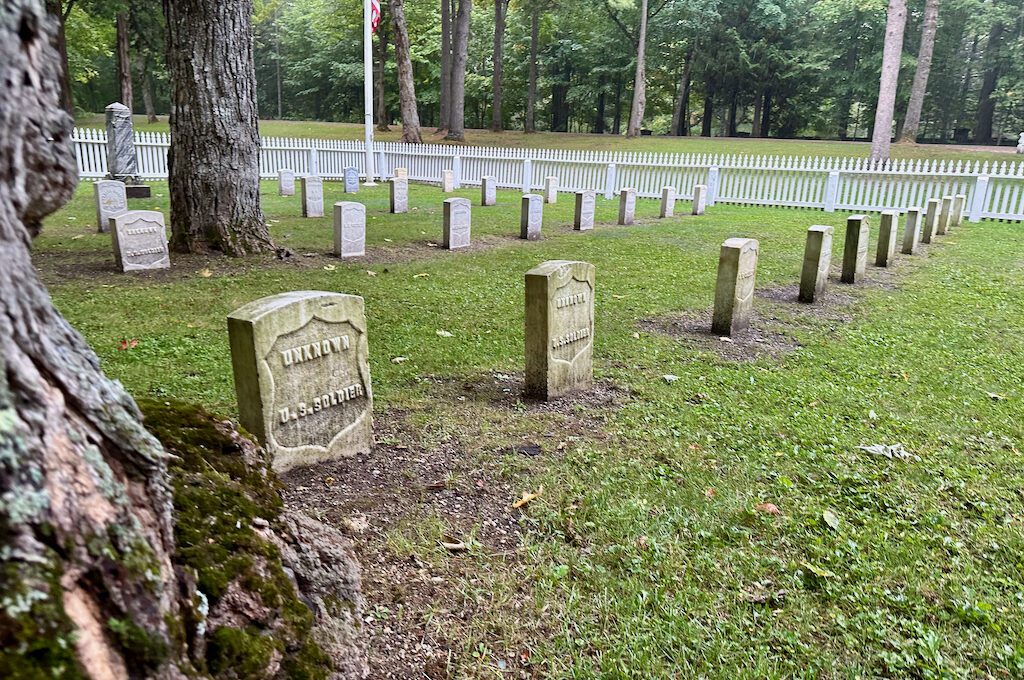
This battlefield is yet another location that you can visit when on the island.
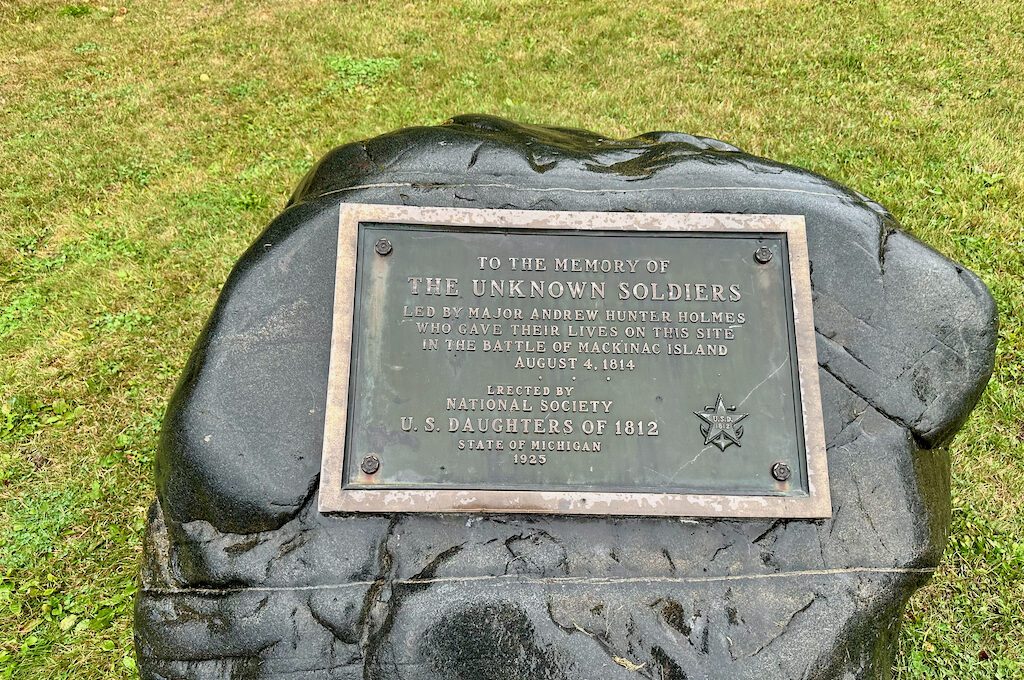
Fort Mackinac remained under the control of the British Empire for a significant period until the conclusion of the war when it was returned to the United States as part of the Treaty of Ghent in 1815.
Throughout the 19th century, Fort Mackinac continued to operate as a military post. However, by the late 1800s, its defensive role had become obsolete.
Instead, it found new purposes, such as serving as the headquarters for managing the national park established on Mackinac Island. Eventually, it was decommissioned in 1895, and the fort became a part of Michigan’s first State Park, as the focus on the island shifted to tourism.
In the late 1950s, after restoration work that went on through the decades, Fort Mackinac opened as a living history museum.
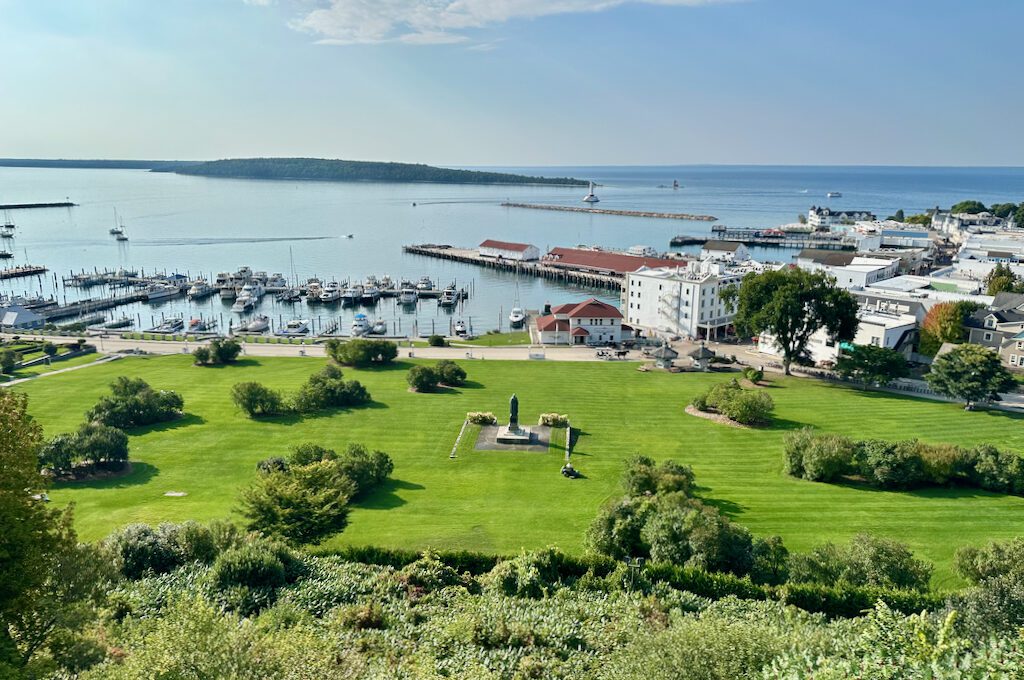
How to get to Fort Mackinac
To visit Fort Mackinac, you must first make your way to Mackinac Island.
If you’re not familiar with the island, it’s important to note that automobiles are not permitted there. Instead, you’ll need to access the island by taking a ferry, boat, or flying in. It’s just a brief uphill walk from the downtown area to reach the fort’s south entrance. Alternatively, you can come from the north entrance.
An adult ticket is about $15 and comes with admission to other sites on the island. For more on pricing and admission you can go here.
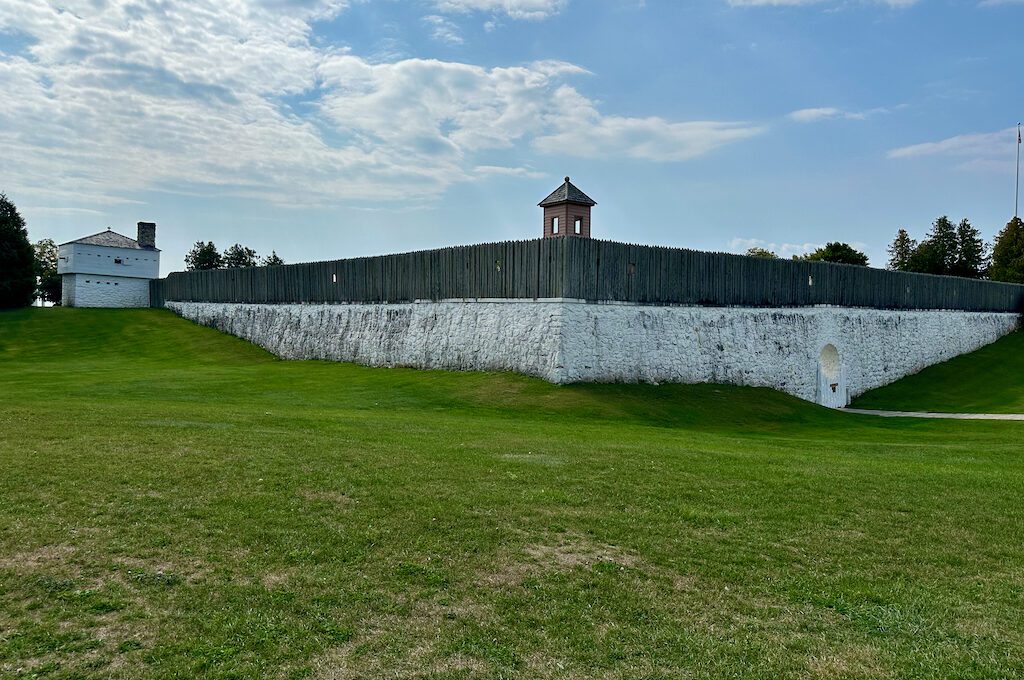
Experiencing Fort Mackinac
Indeed, there is much to explore and experience at Fort Mackinac. When planning your visit, it’s advisable to allocate ample time to fully appreciate all that it has to offer.
Throughout the day, visitors have the opportunity to witness engaging historical demonstrations that transport them back in time.
These demonstrations often include captivating reenactments featuring period rifles like the Springfield model 1873.
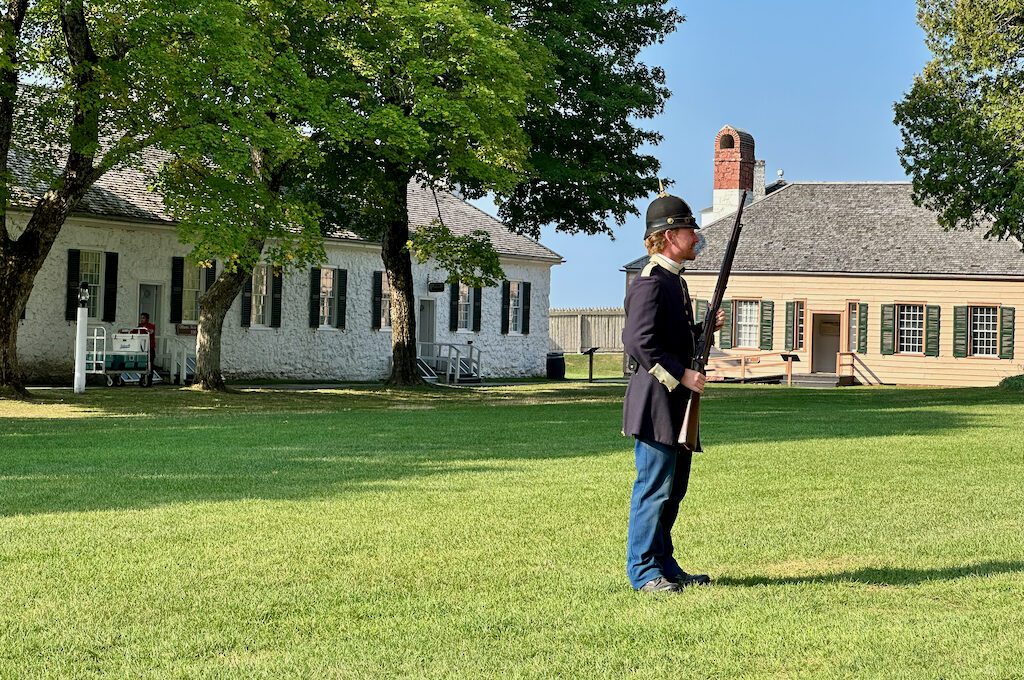
he firing of the renowned cannon, a 1841 model six-pounder is not to be missed!
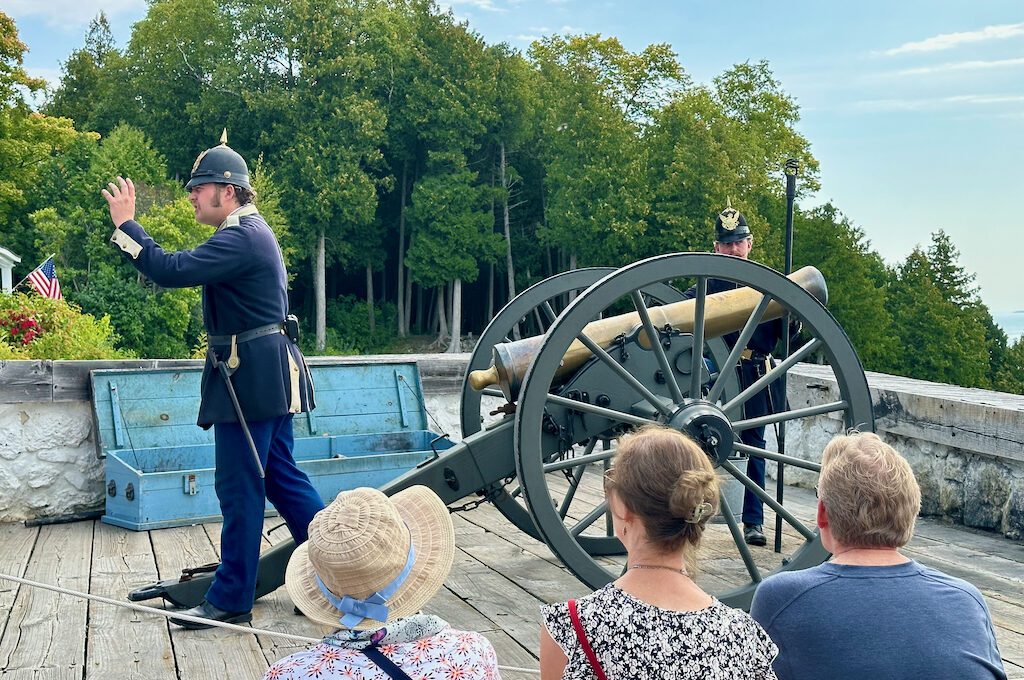
There is also a guided tour which will give you a great background into the evolution of the fort.
For the most part, you’re standing in the parade grounds so the tour doesn’t take you in and out of the buildings (which is probably a good thing because those are best explore in small groups).
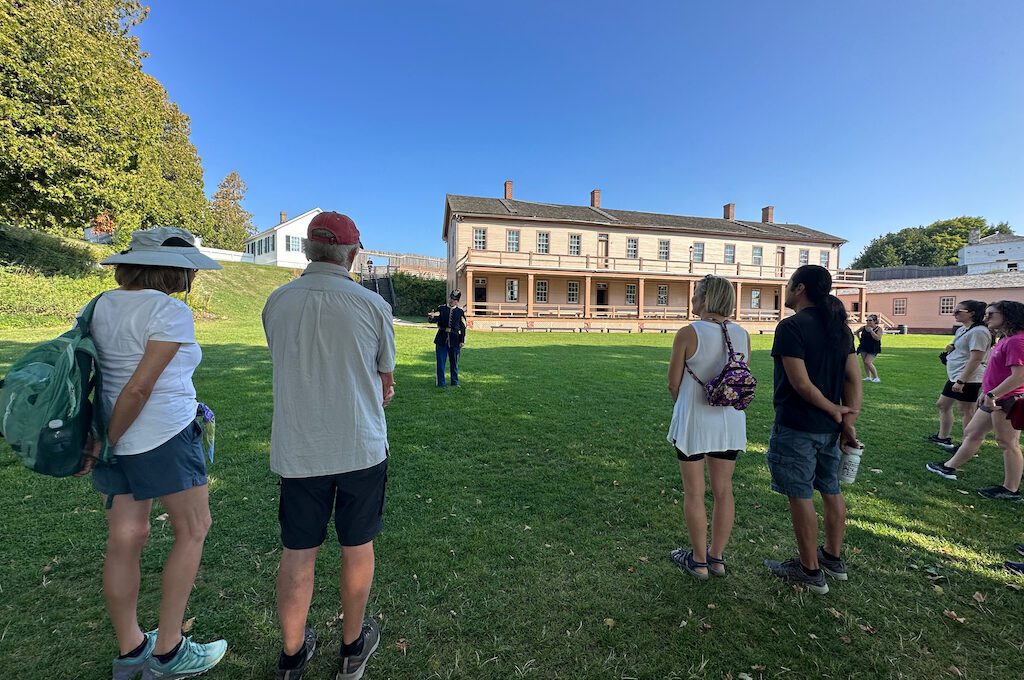
Visitors can plan ahead by calling to inquire about the scheduled times for these demonstrations.
Alternatively, while exploring the fort, keep an ear out for the uniformed workers dressed in 1880s Prussian-inspired uniforms, as they often make announcements regarding the timing of these events.
Furthermore, if you encounter these knowledgeable workers during their free moments, don’t hesitate to approach them with any questions you may have about the fort’s history. They are usually eager to share fascinating insights and historical tidbits.
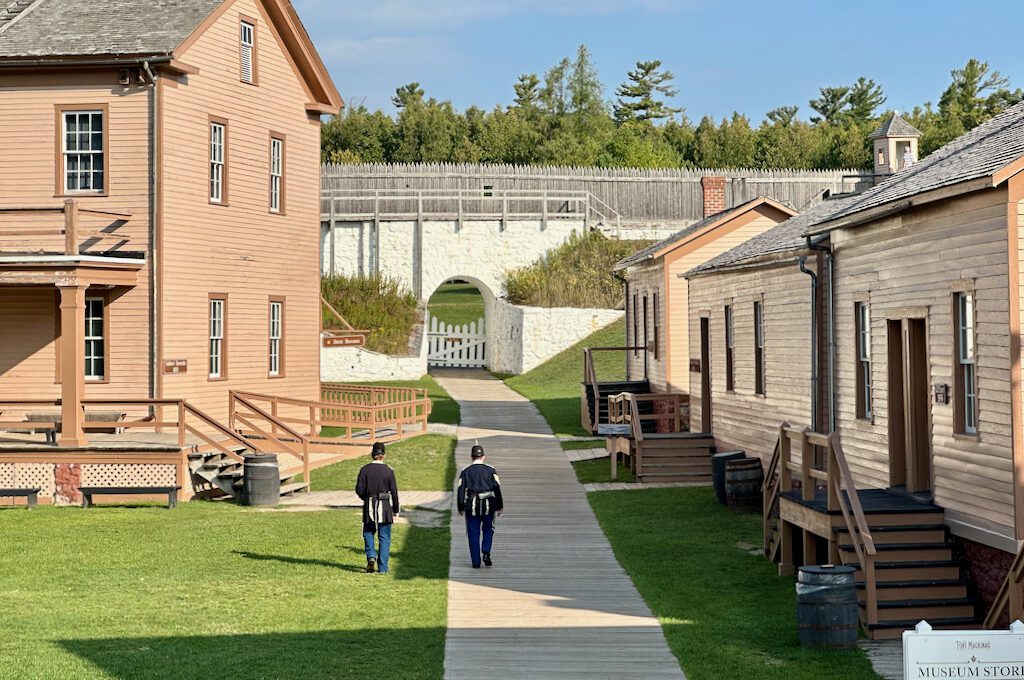
In addition to the scheduled demonstrations and shows, you have the freedom to embark on self-guided exploration throughout the fort.
As you explore, you’ll encounter a plethora of intriguing structures to enter and explore. Many of these sites feature interpretive panels and artifacts that provide valuable insights into the fort’s rich history, enhancing your learning experience.
Indeed, some of the structures within the fort are incredibly captivating, such as the Post Guardhouse, which once served as the detention area for prisoners. What makes it even more intriguing is the presence of graffiti dating back to the 1800s, left behind by the incarcerated individuals who were held in this room.
You’ll also have the opportunity to explore a variety of other historical buildings, each with its own unique significance. Some of these include the Soldiers Barracks, Post Schoolhouse, Officer’s Stone Quarters (which is Michigan’s oldest building, dating back to 1780), and the Commissary Building.
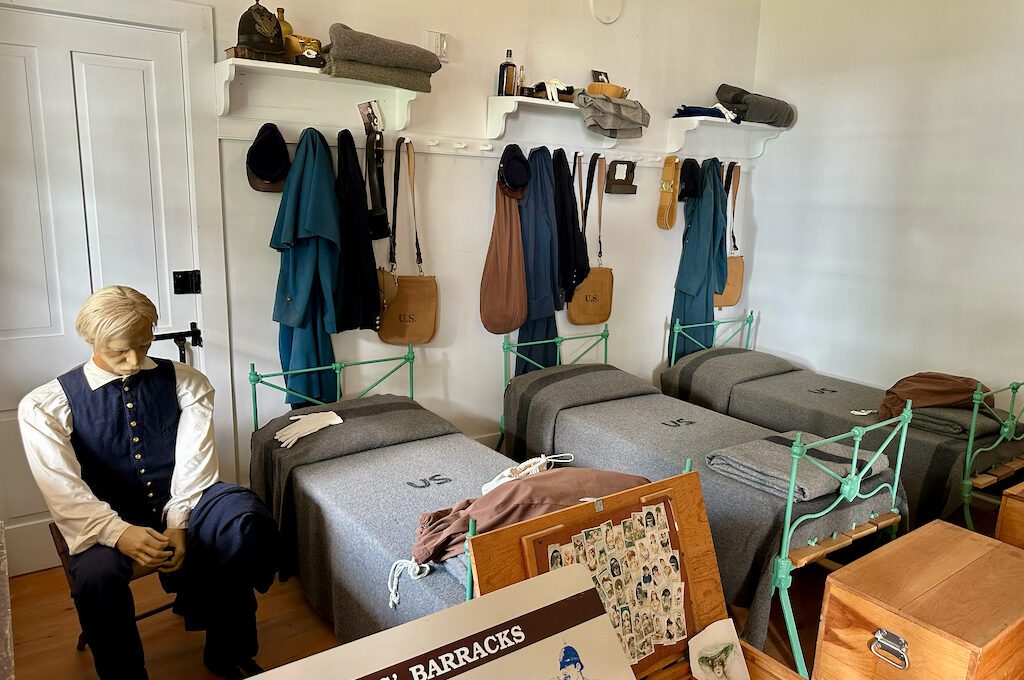
These structures offer a diverse range of insights into the fort’s history and the daily life of its inhabitants during different time periods.
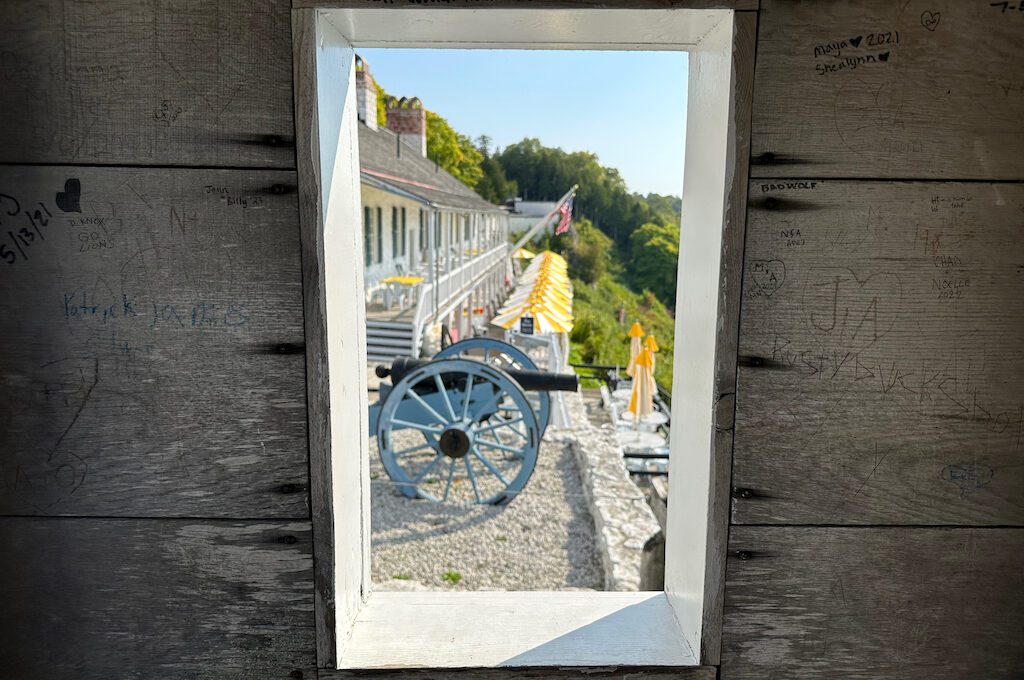
One of the most intriguing and unforgettable experiences you can have at Fort Mackinac is the opportunity to be the one person who fires the cannon in the morning, for a little extra cost (~$60 extra).
As a history buff, this is an incredibly cool and memorable activity, well worth the investment. Plus, I’m pretty sure the money spent on this experience goes toward supporting the fort and its preservation, making it a win-win for history buffs and the fort’s continued maintenance.
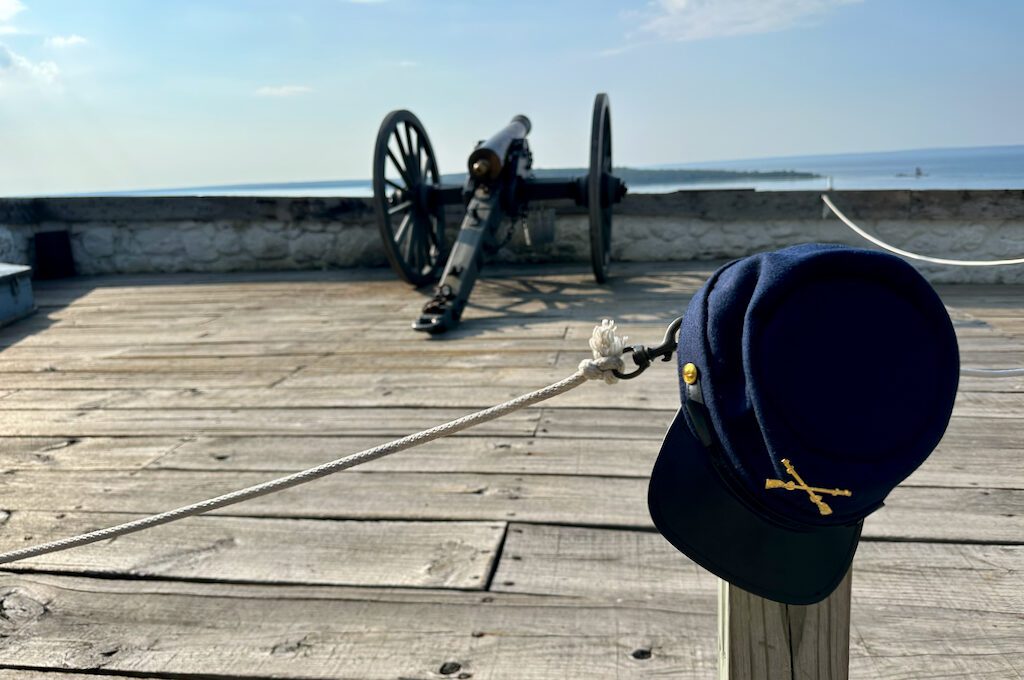
Final word
For many people, Fort Mackinac stands as the highlight of their Mackinac Island experience.
Its rich history, well-preserved structures, and engaging historical demonstrations make it a must-visit destination for those exploring this unique and captivating island.
From its strategic location overlooking the straits to the intriguing artifacts and stories it houses, Fort Mackinac offers a glimpse into the past that truly enhances any visit to Mackinac Island.
Daniel Gillaspia is the Founder of UponArriving.com and the credit card app, WalletFlo. He is a former attorney turned travel expert covering destinations along with TSA, airline, and hotel policies. Since 2014, his content has been featured in publications such as National Geographic, Smithsonian Magazine, and CNBC. Read my bio.

